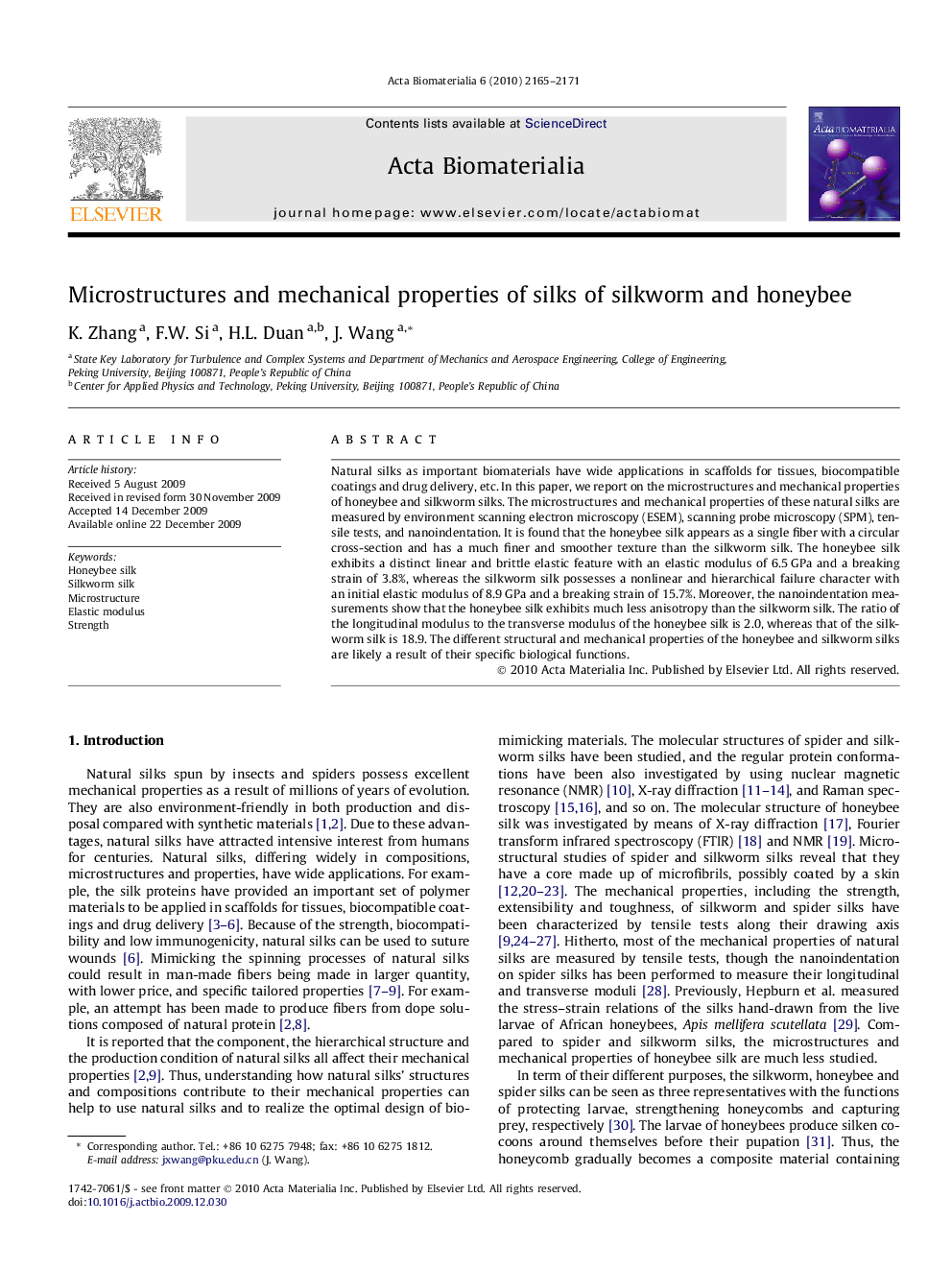| Article ID | Journal | Published Year | Pages | File Type |
|---|---|---|---|---|
| 1421 | Acta Biomaterialia | 2010 | 7 Pages |
Natural silks as important biomaterials have wide applications in scaffolds for tissues, biocompatible coatings and drug delivery, etc. In this paper, we report on the microstructures and mechanical properties of honeybee and silkworm silks. The microstructures and mechanical properties of these natural silks are measured by environment scanning electron microscopy (ESEM), scanning probe microscopy (SPM), tensile tests, and nanoindentation. It is found that the honeybee silk appears as a single fiber with a circular cross-section and has a much finer and smoother texture than the silkworm silk. The honeybee silk exhibits a distinct linear and brittle elastic feature with an elastic modulus of 6.5 GPa and a breaking strain of 3.8%, whereas the silkworm silk possesses a nonlinear and hierarchical failure character with an initial elastic modulus of 8.9 GPa and a breaking strain of 15.7%. Moreover, the nanoindentation measurements show that the honeybee silk exhibits much less anisotropy than the silkworm silk. The ratio of the longitudinal modulus to the transverse modulus of the honeybee silk is 2.0, whereas that of the silkworm silk is 18.9. The different structural and mechanical properties of the honeybee and silkworm silks are likely a result of their specific biological functions.
